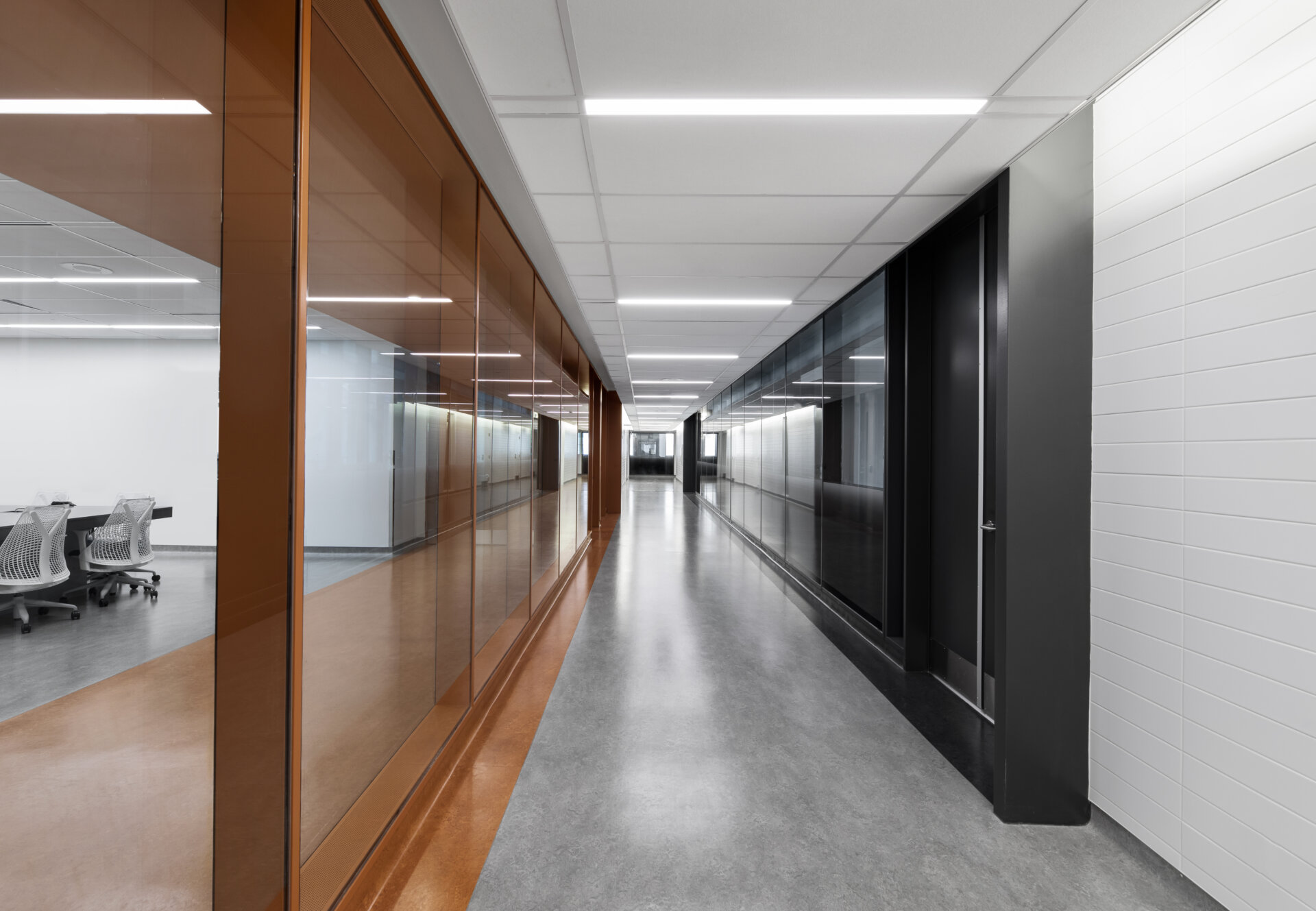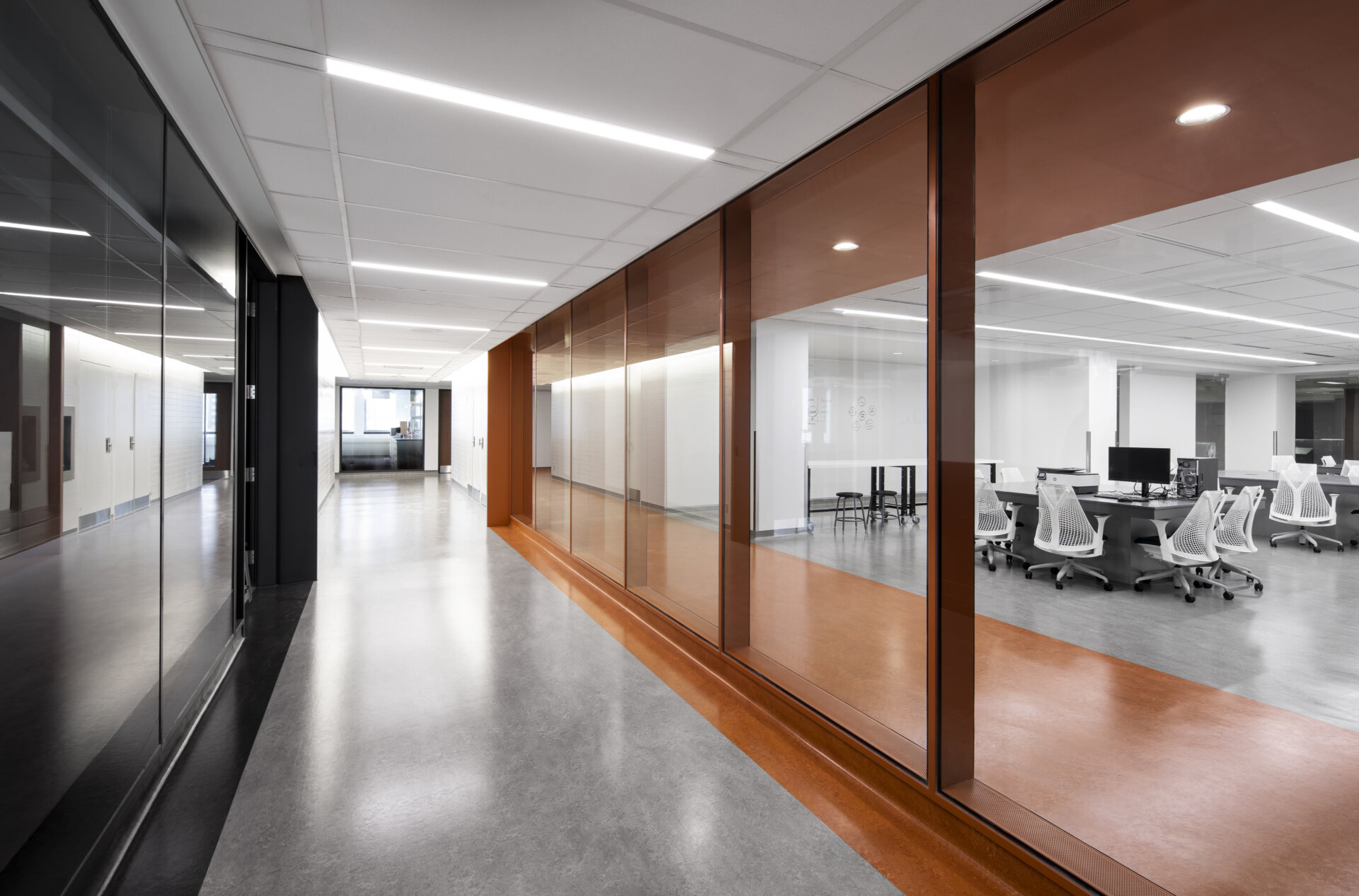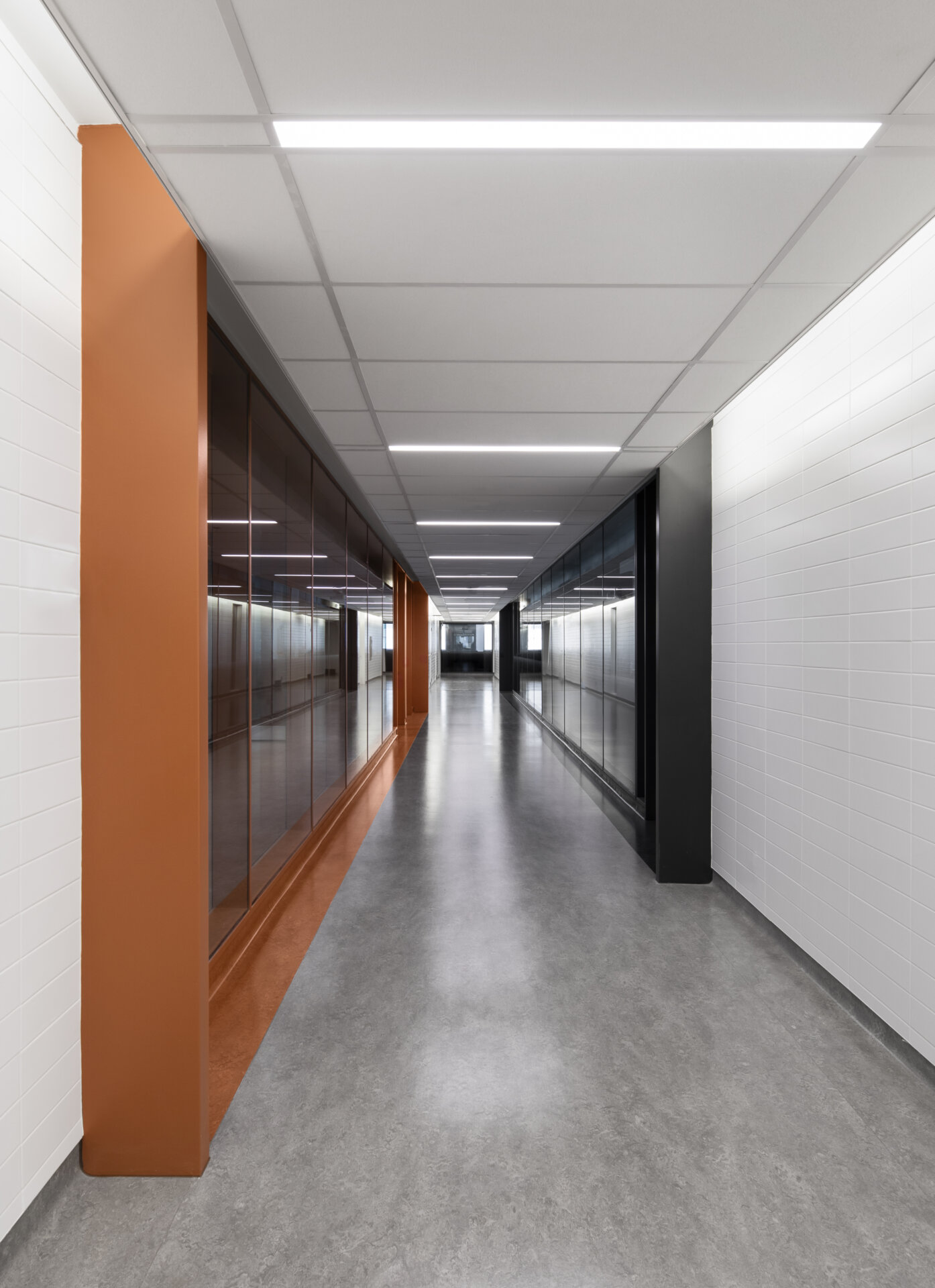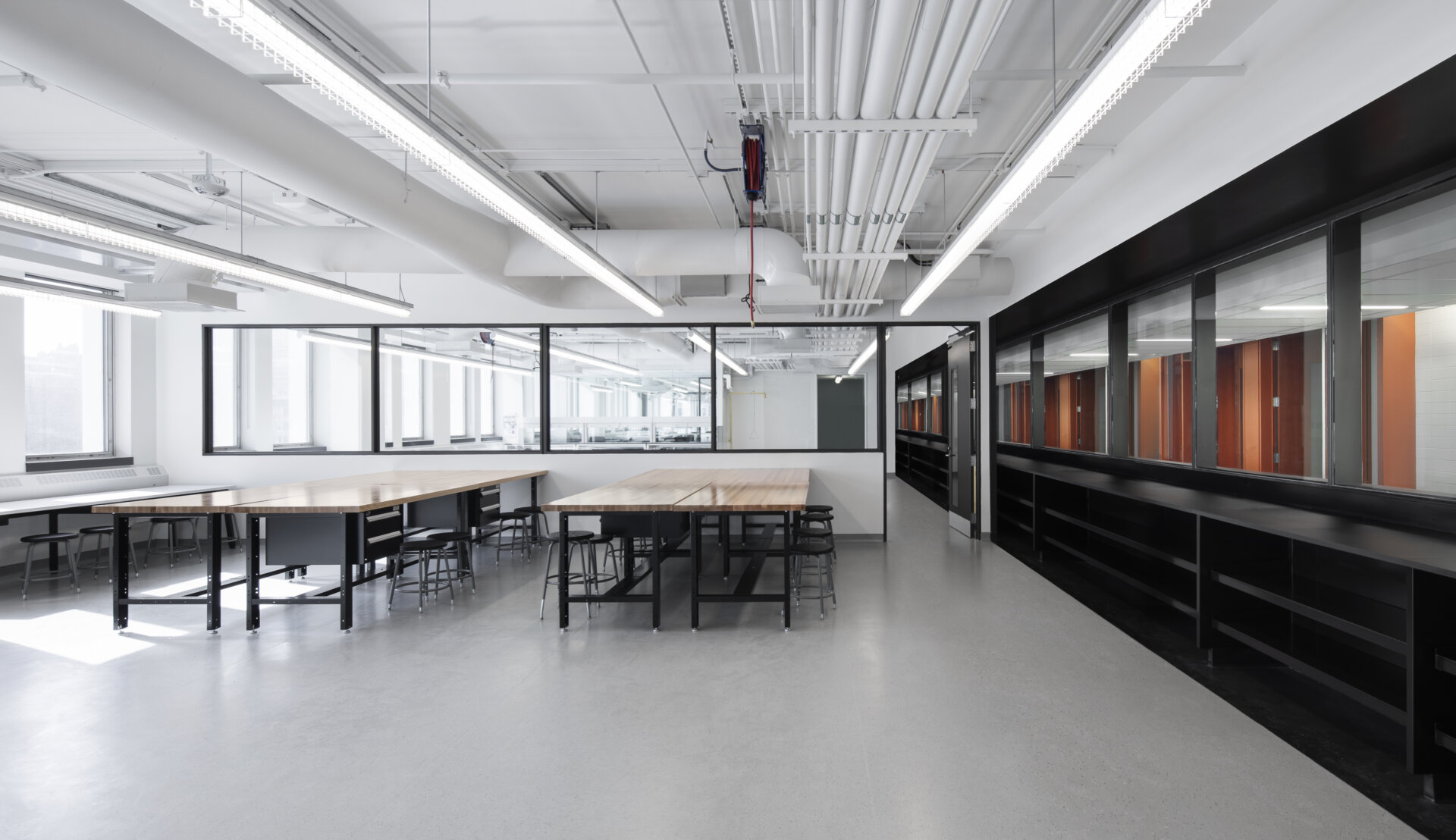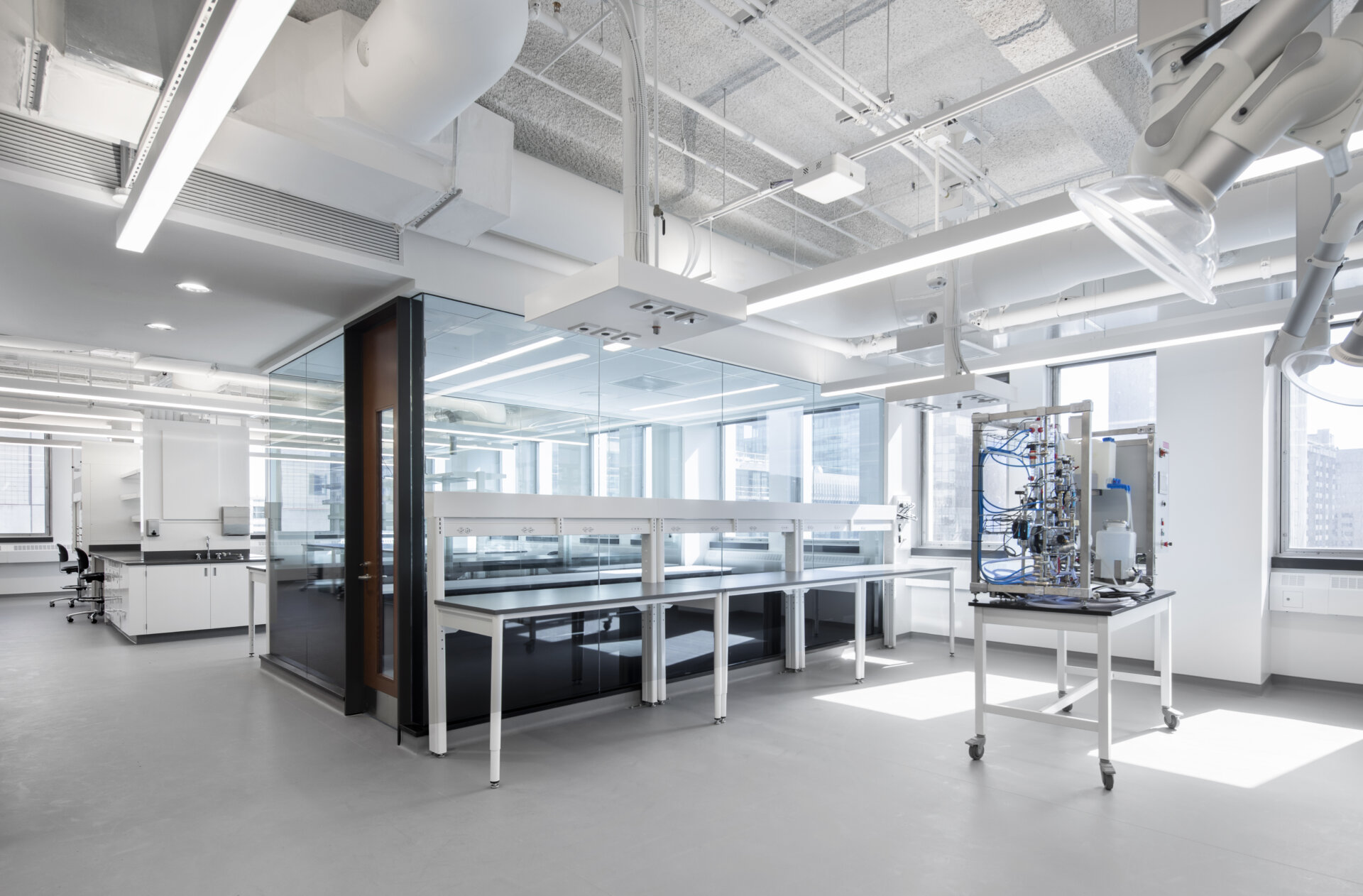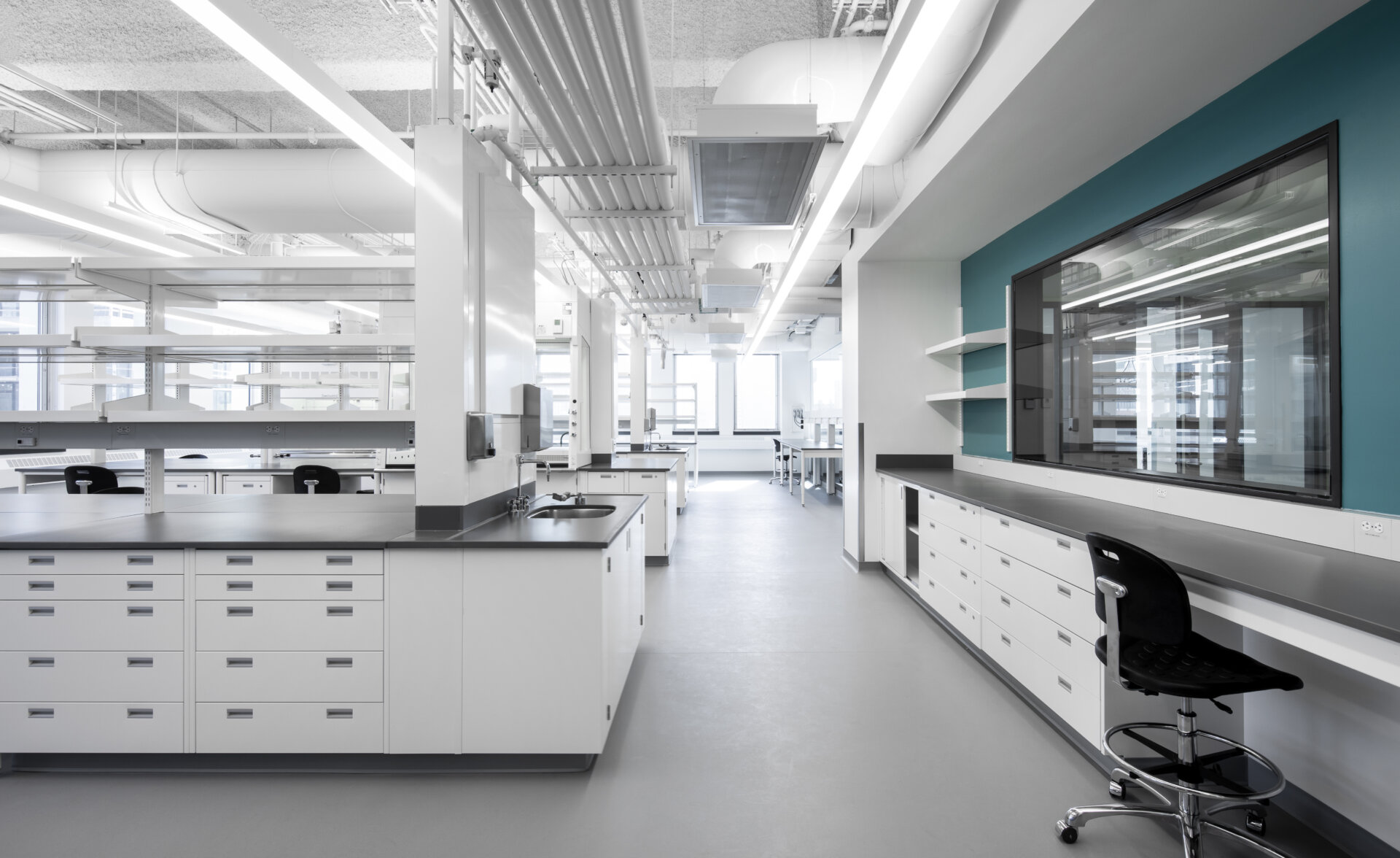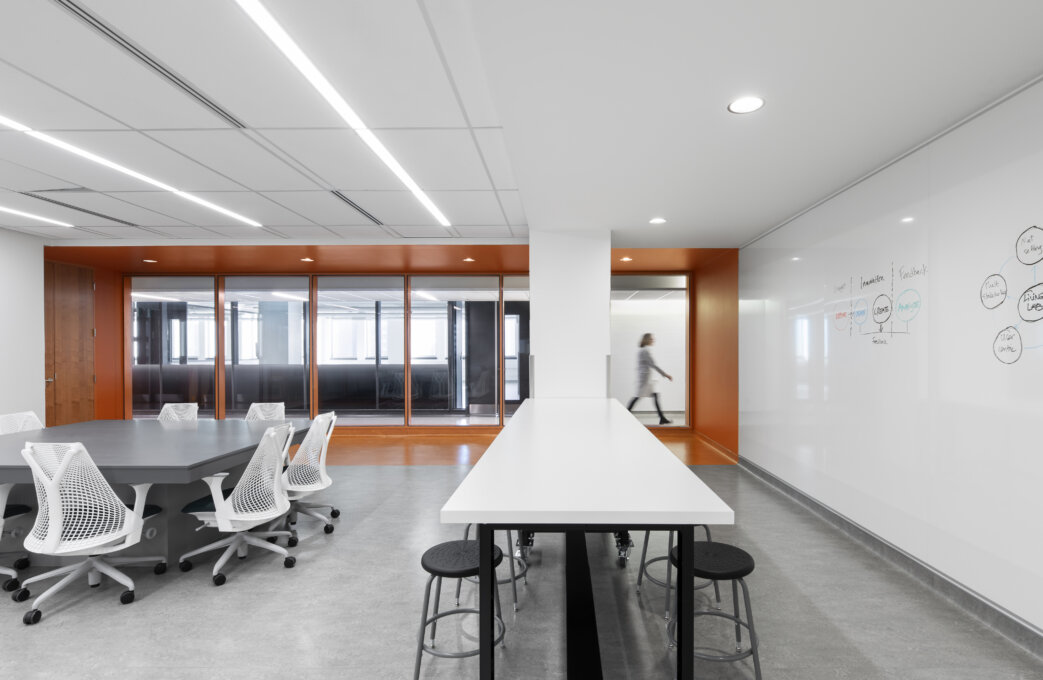
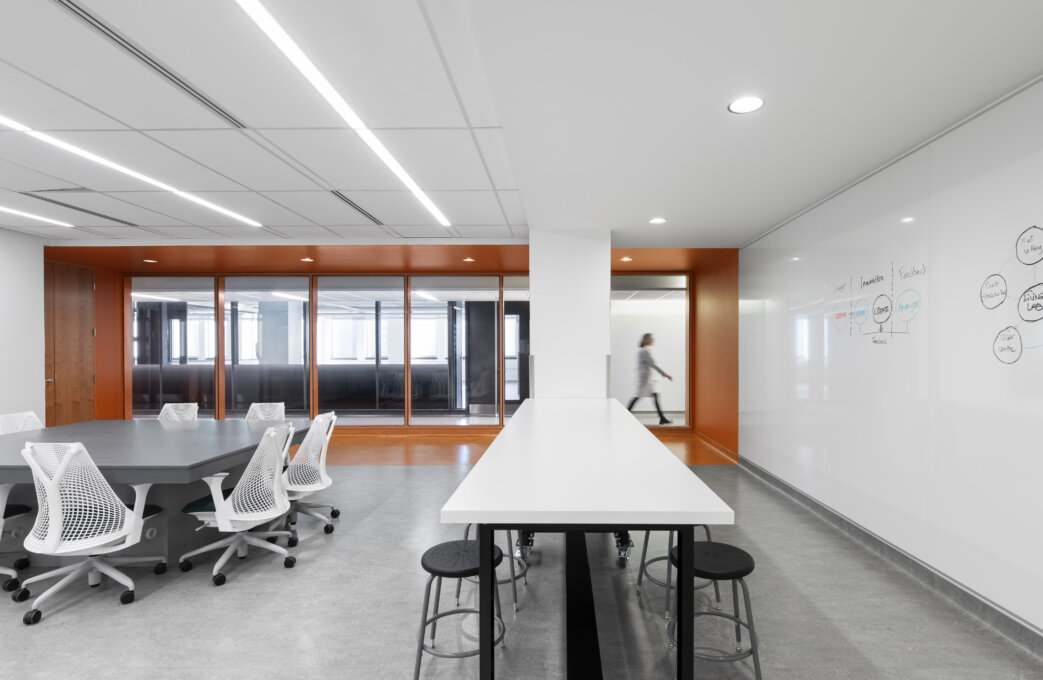

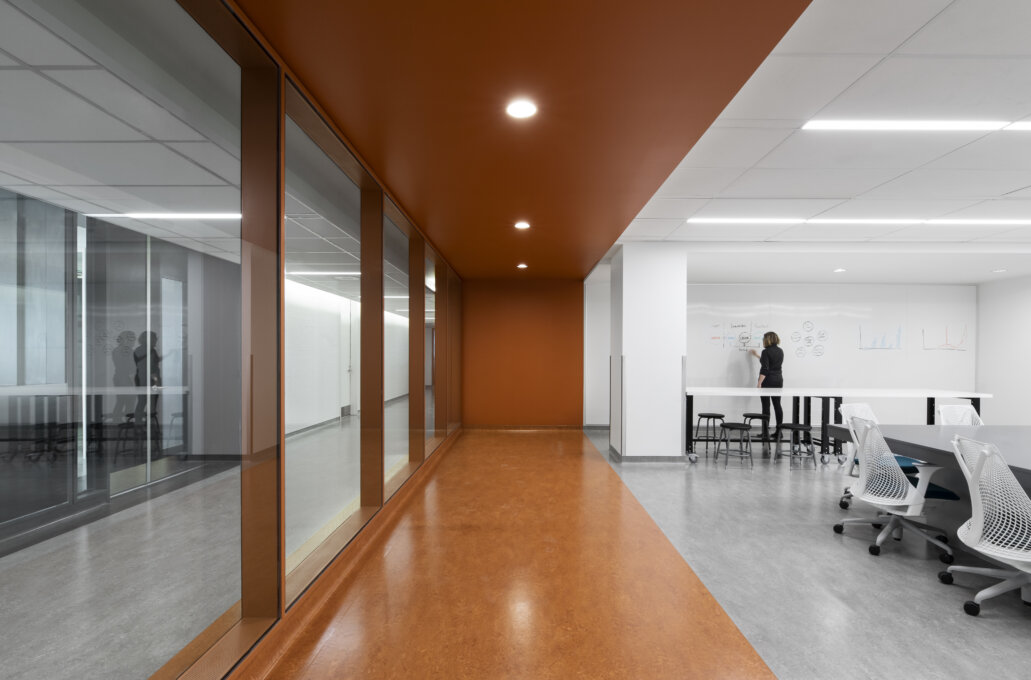


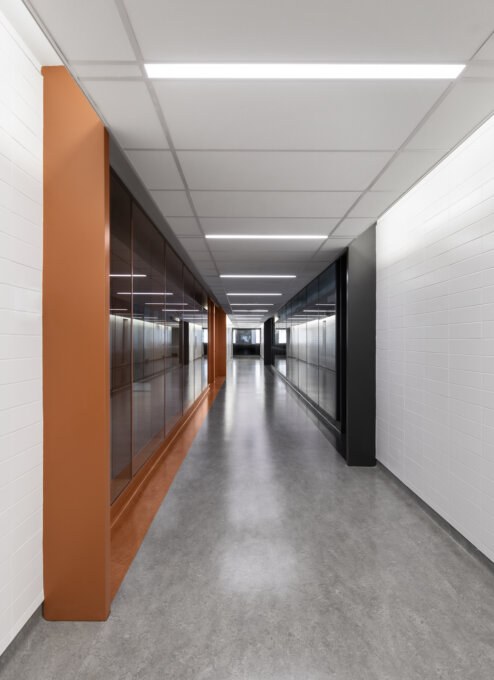
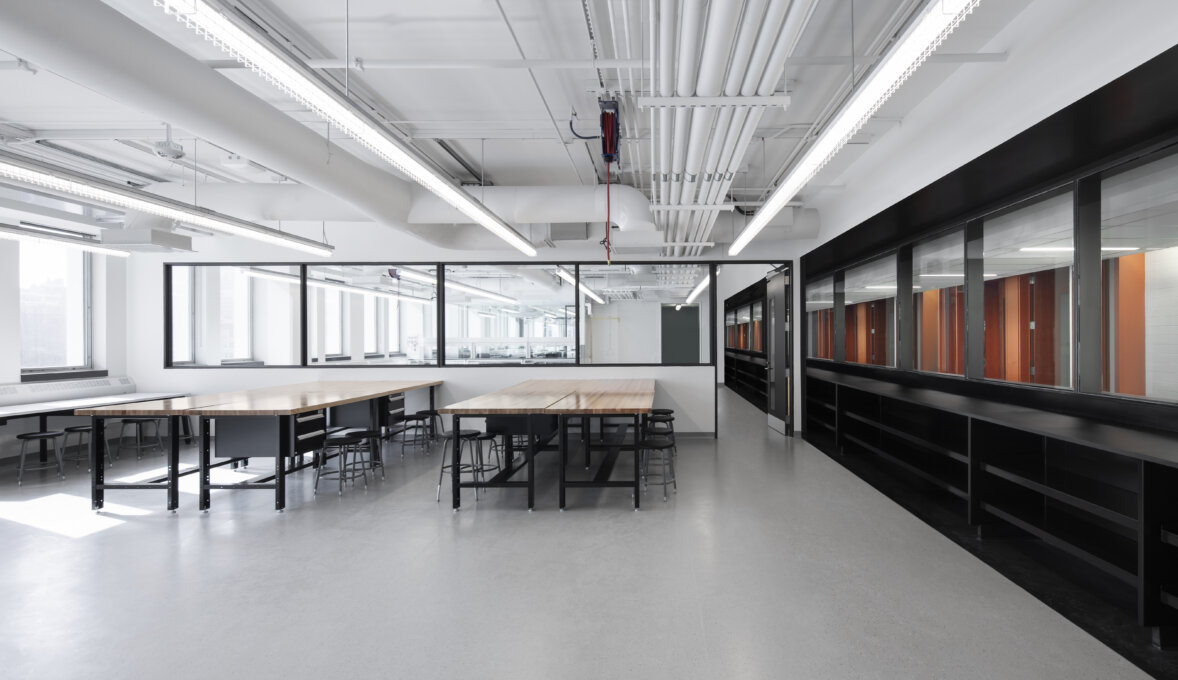
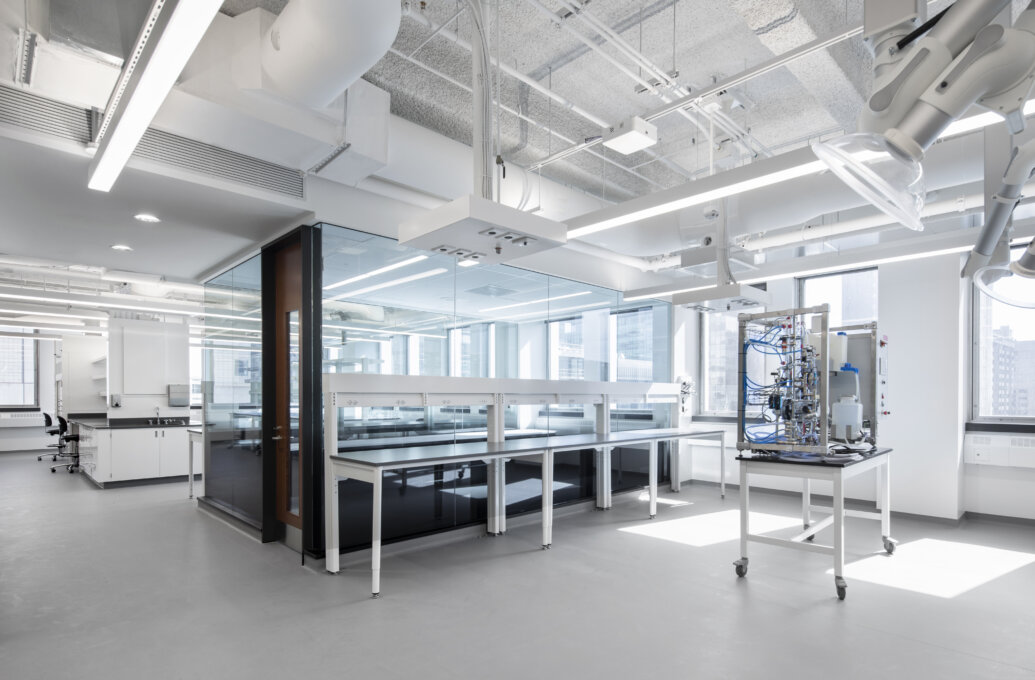
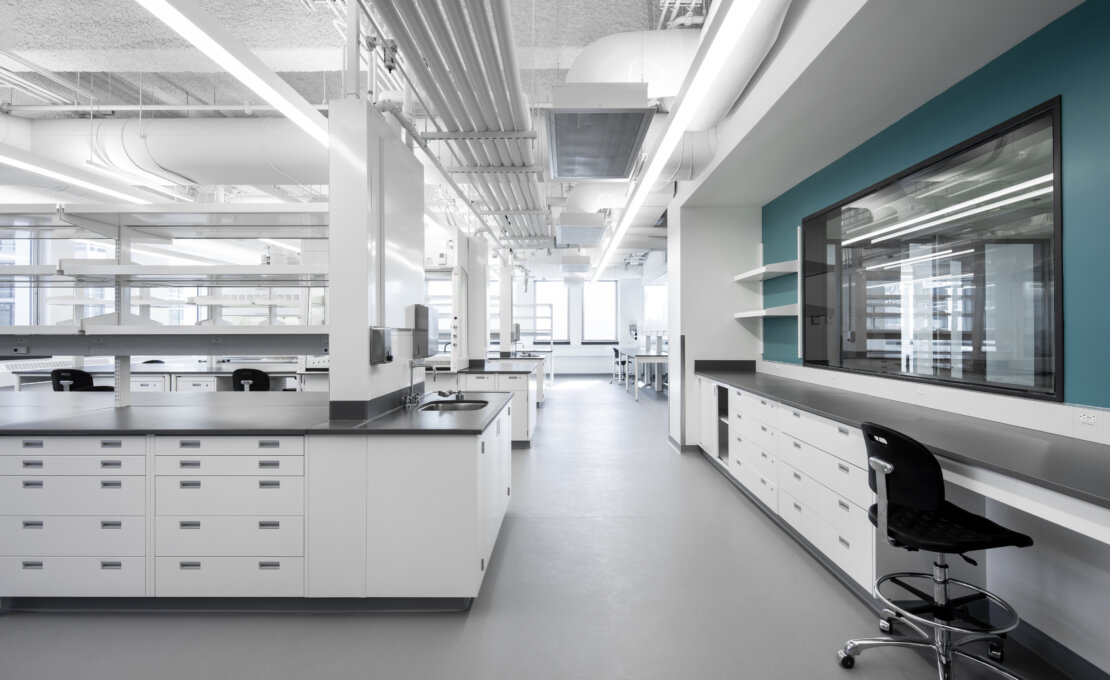
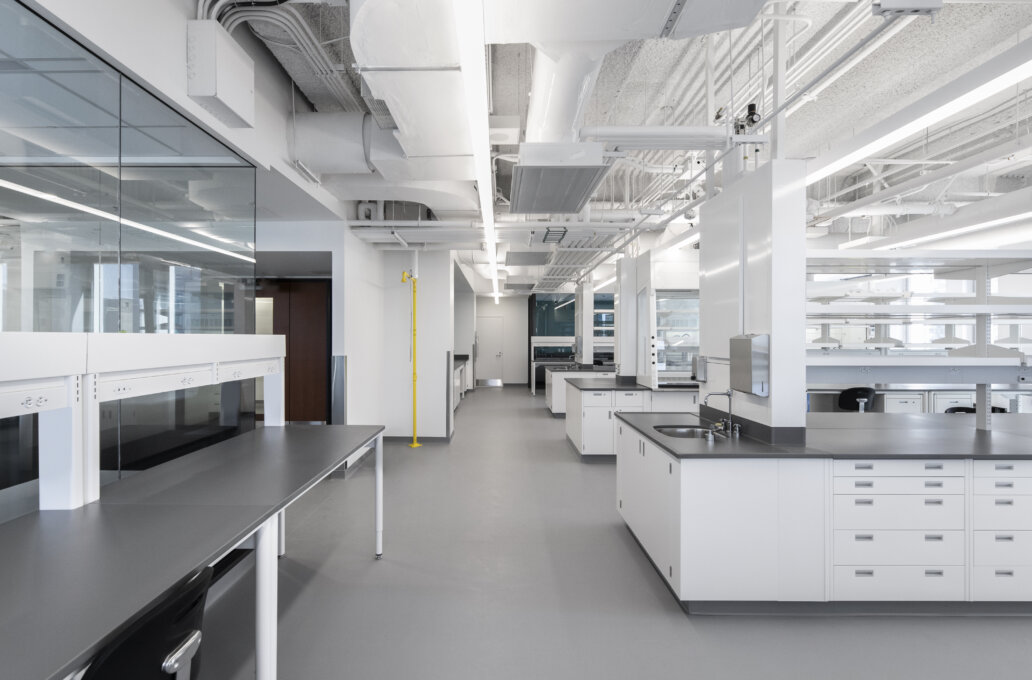
Share to
Laboratoires H10 – École de génie et d’informatique Gina-Cody
By : NFOE + Gestion des immeubles Concordia
GRANDS PRIX DU DESIGN – 15th edition
Discipline : Architecture
Categories : Public Building / Higher Education & Research Building : Gold Certification
Categories : Special Award / Architecture + Collaboration : Gold Certification
As part of the "Laboratories H10 Gina-Cody School of Engineering and Computer Science" project, Concordia University has refurbished new teaching spaces in the western part of the 10th floor of the Henry F. Hall Building to accommodate laboratories for Aerospace and Chemical & Materials Engineering (CME), two Maker Spaces (wood and metal workshops), a Living Lab for studying the real-time functioning of buildings, as well as student spaces for research.
The Henry F. Hall Building, built in 1966, is the main building of the Sir-George-Williams campus in downtown Montreal. The design of the project was developed in close collaboration with Concordia University, its users, its design department, the team of engineers and external consultants, and follows the guiding principles that ensure the durability of the emblematic modernist style of the pavilion. Each floor has a central corridor in which public functions are arranged. The Living Lab and the Maker Spaces are at the heart of the project and Concordia wanted to make these new academic spaces attractive and visible to students. A technological showcase has been arranged between the Living Lab and the central public axis, thus creating a transparency that provides users with a depth of view from the heart of the pavilion to the exterior windows. The colors of the wooden doors and gray steel frames, present throughout the Pavilion, were used to highlight the windows of the Living Lab and the Maker Space in the new circulation areas. The entrances to the Aérospace and CME laboratories are located in the axis of the main corridors and their strategic positioning facilitates the orientation of users within the floor.
Spaces generating a high level of noise (Maker Space and Aérospace) have been moved away from existing classrooms and auditoriums. Particular attention has been paid to the acoustics. They are equipped with a subfloor designed in collaboration with an acoustician using in situ tests, double acoustic glass partitions, and a ceiling designed to limit the transmission of sound to the upper floors.
The spaces are arranged in such a way as to encourage collaboration between students. The Maker Spaces are largely glazed along the corridor and communicate with one another. Their furniture is custom-designed and allows storage and display of student models that are visible from the corridor. Sinks, workspaces, and chemical hoods are designed according to universal accessibility standards. The technicians' glass enclosed offices are centrally located, which allows them to have optimal visibility of the students. The laboratories’ electricity, gas and water services are accessible from service panels suspended from the ceiling. These flexible plug-and-play services supply research equipment as well as fully reconfigurable laboratory furniture, which offers the institution great flexibility of use.
''Plug and play'' type services also supply the work tables installed in front of the glass partitions of the technician's offices, which makes it possible to maximize their transparency and ensure an abundance of natural light from the southwest through all the spaces.
Collaboration
Other : Gestion des immeubles Concordia
General Contractor : Groupe Piché
Manufacturer - Distributor : Groupe LMT
Manufacturer - Distributor : Bedcolab





